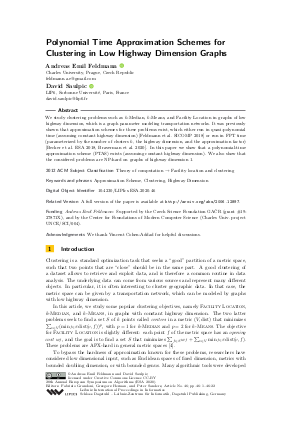@InProceedings{feldmann_et_al:LIPIcs.ESA.2020.46,
author = {Feldmann, Andreas Emil and Saulpic, David},
title = {{Polynomial Time Approximation Schemes for Clustering in Low Highway Dimension Graphs}},
booktitle = {28th Annual European Symposium on Algorithms (ESA 2020)},
pages = {46:1--46:22},
series = {Leibniz International Proceedings in Informatics (LIPIcs)},
ISBN = {978-3-95977-162-7},
ISSN = {1868-8969},
year = {2020},
volume = {173},
editor = {Grandoni, Fabrizio and Herman, Grzegorz and Sanders, Peter},
publisher = {Schloss Dagstuhl -- Leibniz-Zentrum f{\"u}r Informatik},
address = {Dagstuhl, Germany},
URL = {https://drops.dagstuhl.de/entities/document/10.4230/LIPIcs.ESA.2020.46},
URN = {urn:nbn:de:0030-drops-129129},
doi = {10.4230/LIPIcs.ESA.2020.46},
annote = {Keywords: Approximation Scheme, Clustering, Highway Dimension}
}

 Creative Commons Attribution 3.0 Unported license
Creative Commons Attribution 3.0 Unported license














